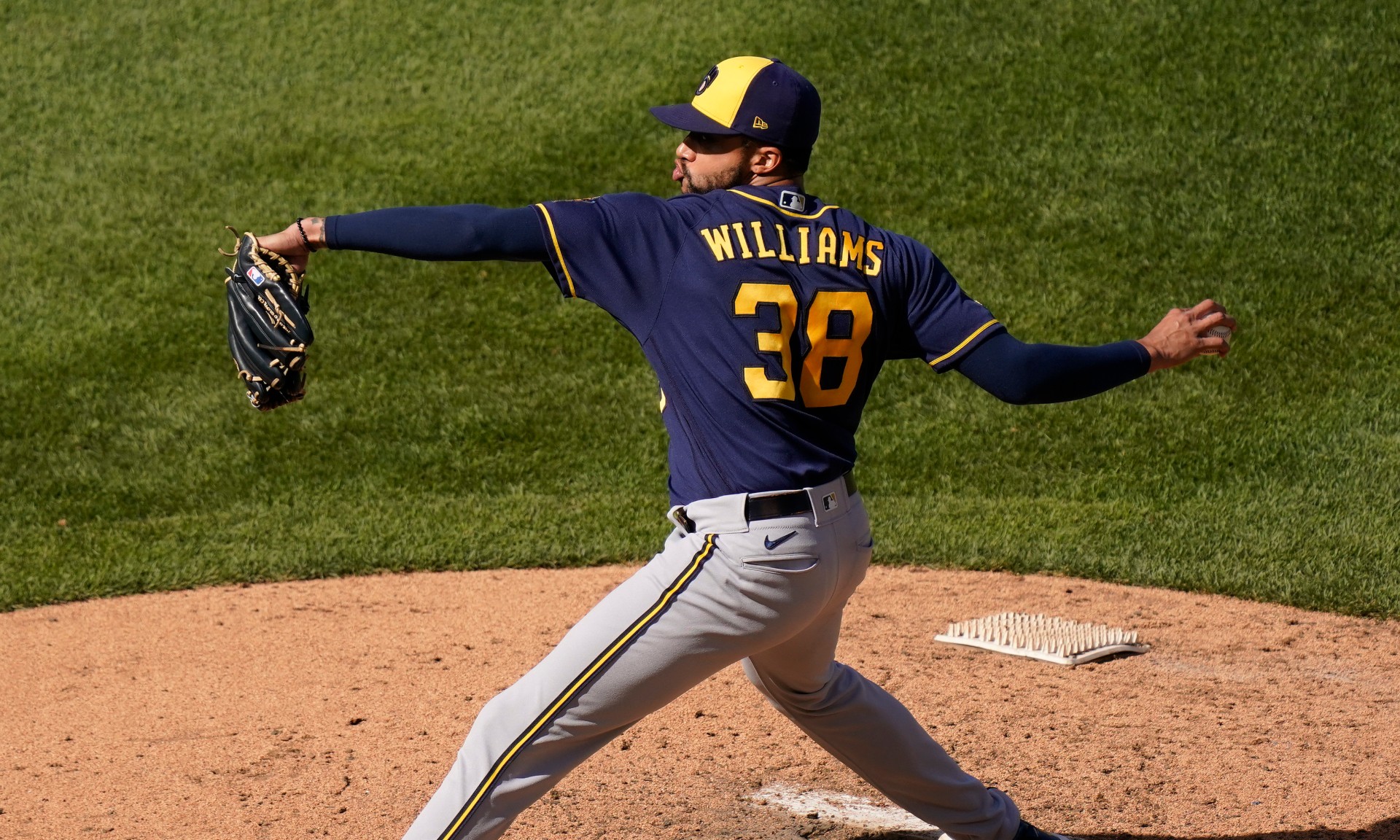In terms of elite relievers in the league, there are a lot of guys that likely come to mind before Devin Williams. In fact, you probably thought of Williams’ own teammate, that Josh Hader guy, before Williams himself (I hear Hader is pretty good, too). However, Williams has quickly turned himself into one of the most dominant relief pitchers of 2020.
How has he done it?
Well, it’s a long story. Williams was a 2nd round pick out of high school in 2013 by the Brewers, their first selection in the draft. He progressed steadily through the minors, finishing his age-21 season at High A. However, he tore his UCL the following spring, and missed all of 2017 after undergoing Tommy John surgery. He struggled a bit on his way back, and during that journey, he focused more on understanding how his pitches worked, and how to master them. And master them he did.
Williams has been throwing a version of his changeup since he was 10 years old, according to the man himself. Speaking to media recently, Williams said, “I started throwing like that as a kid. Like, when I played catch with my friends, just to mess with people, trying to make them miss the ball when I threw it to them. That’s what turned into my changeup. I’ve had that since I was maybe 10 years old.”
Williams’ changeup has turned into one of baseball’s best pitches. He throws it over 50% of the time, and has used it to turn into one of baseball’s best relievers as well, having allowed just 1 earned run in 17 innings this season.
But one question remains. Is it really a changeup?
Art of the Changeup
Changeups come in all shapes and sizes. No two pitchers will throw a changeup that looks exactly the same. The traditional changeup relies almost solely on speed differential, while the circle-change tends to induce more downward movement, in addition to the speed difference. However, Williams’ changeup is certainly unlike these two, and frankly is different from any change that we’ve seen before.
So why is it different? Well, with most changeups, the goal is to eliminate spin as much as possible. Devin Williams’ changeup does not do this. In fact, it does the exact opposite.
Williams’ changeup has an average spin rate of 2836 rpm, according to ESPN’s Kiley McDaniel. That’s the highest spin rate of any changeup in baseball by 403 rpm.
Another typical feature of a changeup is the factor of deception. If the pitcher throws his changeup with the exact same arm speed, and arm slot, as his fastball, it makes it much harder for the batter to recognize the pitch until it’s too late to adjust. This leads to most pitchers attempting to replicate their fastball arm slot and delivery with their changeup. Naturally, Williams doesn’t do that either.
Take a look at how Williams releases the ball in the top video (and watch the bottom video for a bonus highlight of Sixto Sanchez). Notice how he turns his wrist and forearm as he releases the ball. This unique release (unique for a changeup, at least) has helped him throw a pitch not quite like any other.
Is Devin Williams ‘screwing’ with us?
Williams’ change is more reminiscent of a screwball than it is of a changeup. The screwball is another offspeed pitch, with a speed differential somewhat similar to the changeup. However, while a changeup will break away from the pitcher like most offspeed pitches, the screwball typically has arm-side movement. This means it breaks from left to right when thrown by a right-hander (i.e. Williams).
Here’s another tweet that shows exactly how he pronates his wrist to generate the movement he does.
Apologies to Williams, but that is no changeup. The wrist pronation, the pressure applied by his middle finger, and the arm-side movement are all textbook traits of a screwball.
The screwball is mostly a dead pitch, as it’s not seen much around the league. Yu Darvish throws what seems to be a form of screwball, but he throws so many pitches that it seems pointless to even attempt to define them. Oliver Drake also throws this:

Other than that, there doesn’t appear to be any screwballs at the major league level. This just shows how unique Williams’ pitch is, and how dominant he has been throughout this season.
Devin Williams only throws three pitches: fastball, “changeup”, and a slider. Through his first year-and-change in the MLB, he has thrown just 14 sliders out of the 560 pitches thrown in total. However, you don’t need many pitches when you have a changeup* that is flat-out unhittable.
*= not a changeup. It’s a screwball.




